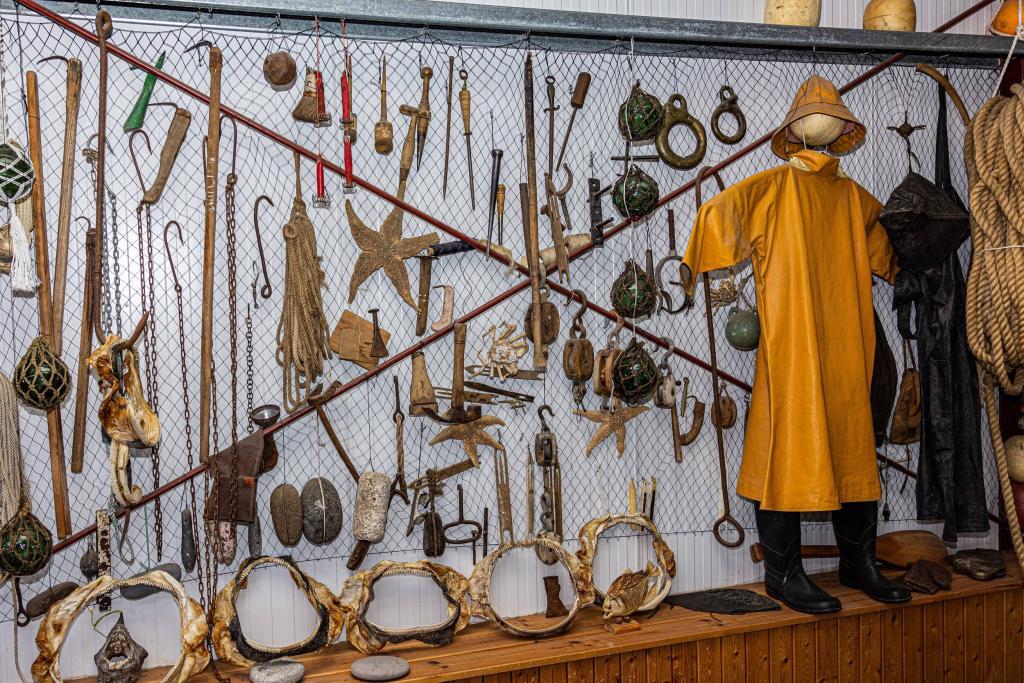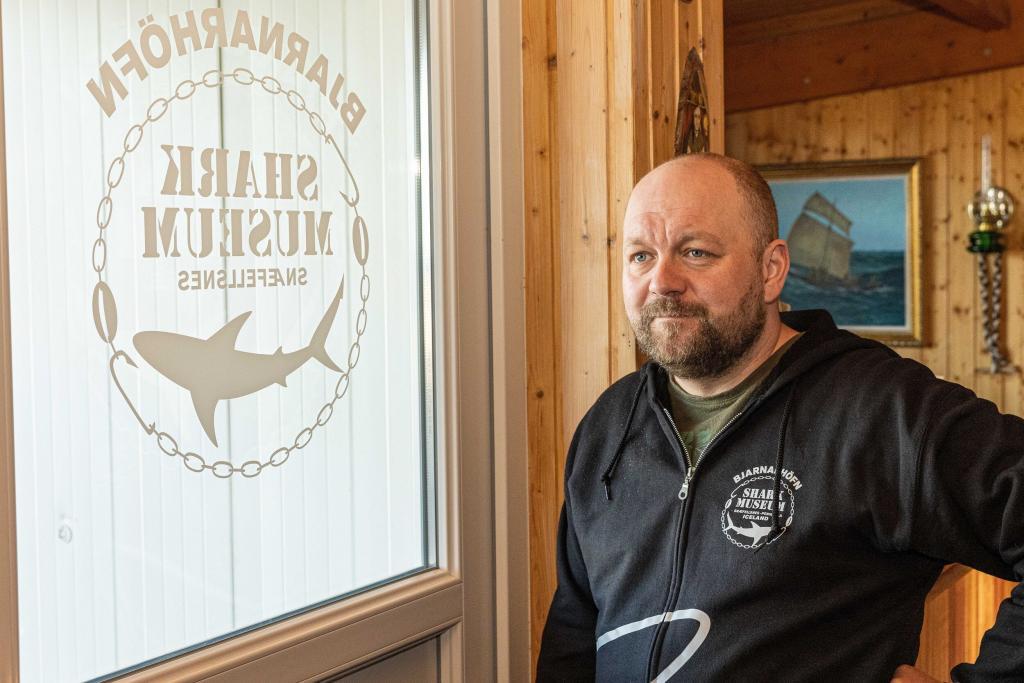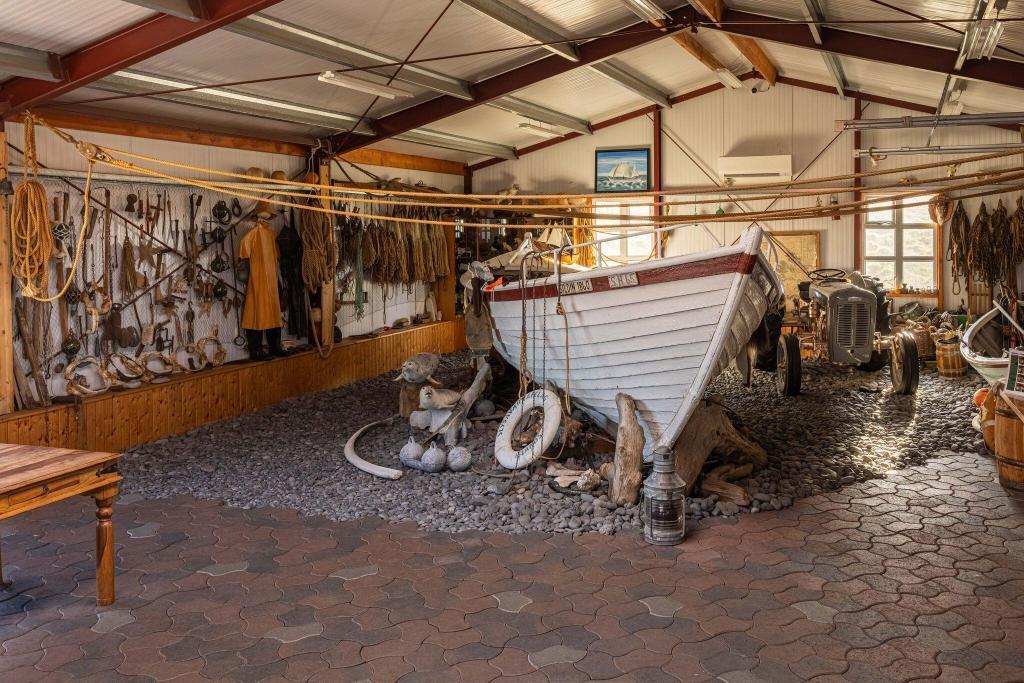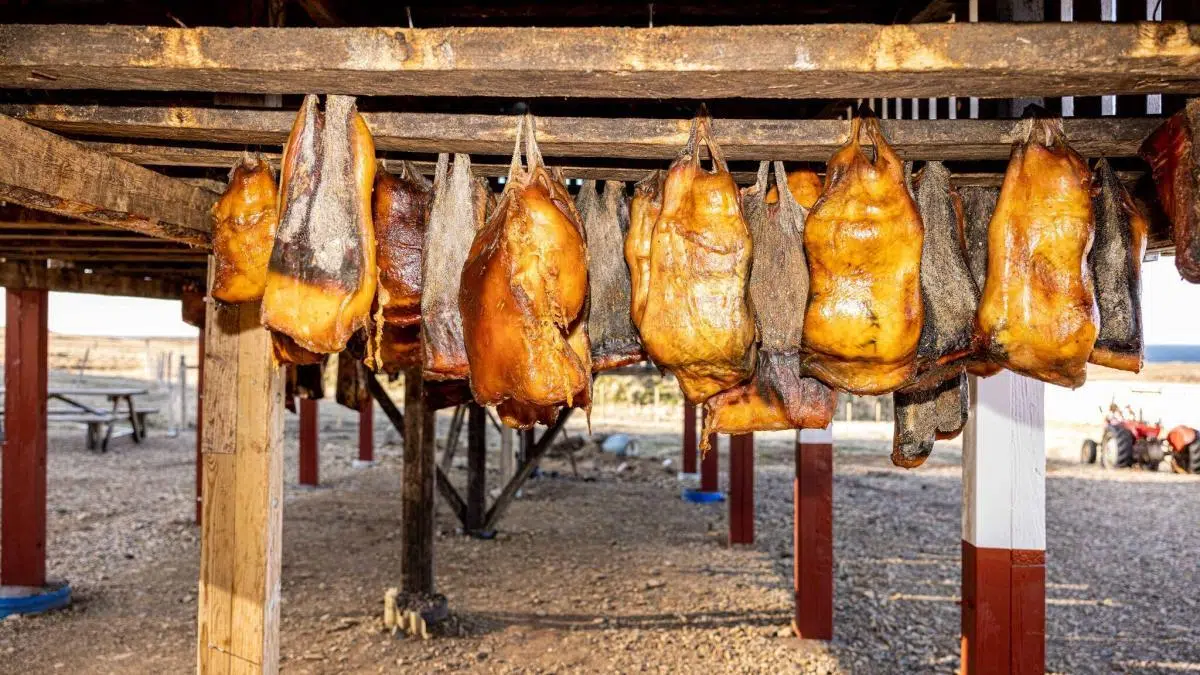Free and exclusive discount codes for hundreds of tours and & travel services in Iceland
Subscribe to instantly receive discount codes for tours, car rental, camper van rental, and outdoor clothing rental. Thank you! ❤️ Jon Heidar, Editor of Stuck in Iceland Travel MagazineEnjoy Icelandic shark with dark rye bread topped with a lot of butter. Forget the whole spiel about downing the cured shark with ice-cold Brennivín. Icelandic shark is super-healthy and should be a part of a hearty meal rather than a party novelty. This culinary nugget was a key takeaway from my visit to the unofficial shark centre of Iceland, Bjarnarhöfn Shark Museum on the Snæfellsnes peninsula, last summer.
Icelandic shark can be enjoyed. Really
Travelers often put cured Icelandic shark on the top of their list of quaint Icelandic food to try. It is not for everyone, but I have always enjoyed eating cured sharks. I remember visiting Paris a few years ago, and during that trip, I visited a cheese shop there. The smell, texture, and taste intensity of the cheeses on offer reminded me of Icelandic cured shark. So if connoisseurs can enjoy aggressively smelling and tasting French cheeses, I am sure that cured shark can also make it onto their list of approved, if quaint, delicacies!

A living shark museum
We visited Bjarnarhöfn in July 2020, it was my wife’s birthday, and we were driving away from a fantastic tour we had up to Snæfellsjökull glacier. As a shark fan, I was excited about finally visiting Bjarnarhöfn Shark Museum, which has been on my to-do list forever. Bjarnarhöfn is one of those living museums where you can immerse yourself into the subject. My wife is, to be phrase it delicately, not a big fan of the cured goodness of the shark. We have “an agreement” that cured pieces of sharks will neither be stored nor consumed in our mutual owned habitat. I find this “agreement” a little one-sided, after all, I am descended from shark hunters from the north of Iceland. Just wanted to get that in here. But she was kind enough to stop at Bjarnarhöfn, and she enjoyed the demonstration there.

Explaining how to treat and enjoy Icelandic shark
The curator, Guðjón Hildibrandsson comes from a long line of shark hunters, and he explained the delicate and complex process of hunting and treating the shark. The shark you will encounter in Iceland is the Greenland shark, and it has pretty unique biology and habits. Visitors get a fun presentation of all of this from Guðjón. The museum also has a lot of cool exhibits. The main exhibit is a genuine shark hunting boat which is quite cool. Just so we are clear, shark is no longer hunted but comes ashore as bycatch. So if you are close to the town of Grundarfjörður in the north of the Snæfellsnes peninsula, I recommend you visit the Bjarnarhöfn Shark Museum.

Shark meat is originally a by-product
Keep in mind that the Greenland shark was not primarily hunted for its meat. Shark oil liver oil was a tremendously valuable product since it was used to light the cities of Europe. In a poor society like Iceland was (sub-Saharan Africa poor), you eat what you can. Even if the shark meat was tough to process to make it edible, it was such a good source of nutrients it was well worth it.
Pampered descendant of tough people
Shark hunting was already a big ‘industry’ in Iceland in the 14th century and was considered a tough job. Each hunting trip took 2 – 4 days. If the shark was elusive or the weather bad, the shark hunters could spend 1 – 2 weeks in an open boat in the northern Atlantic. My great-great grandfather and his son owned a shark hunting boat and braved the icy cold waves of the North Atlantic in search of elusive sharks lurking in the deep.
Writing this on my MacBook Air in the comfort of my bright living room, in my comfy chair, with music playing from my Sonos speaker, and sipping on coffee from a fancy coffeemaker now feels surreal. What would my ancestors think of their pampered descendant? I think I would not measure up to those hard men.
Big money, big risks
In the 17th and 18th-century, shark hunting would be primarily be done from the north and west of the country. The 19th century was the heyday of shark hunting. This was when Icelandic shark hunters acquired bigger boats. You could make so much money from shark liver oil that it was not uncommon that one season would pay for a new boat. But after 1860, kerosene starts to replace shark liver oil as a fuel for lights, and shark hunting declined.
How to get to Bjarnarhöfn
Drive on road 54 from the town of Grundarjörður – the town with Mt. Kirkjufell.




